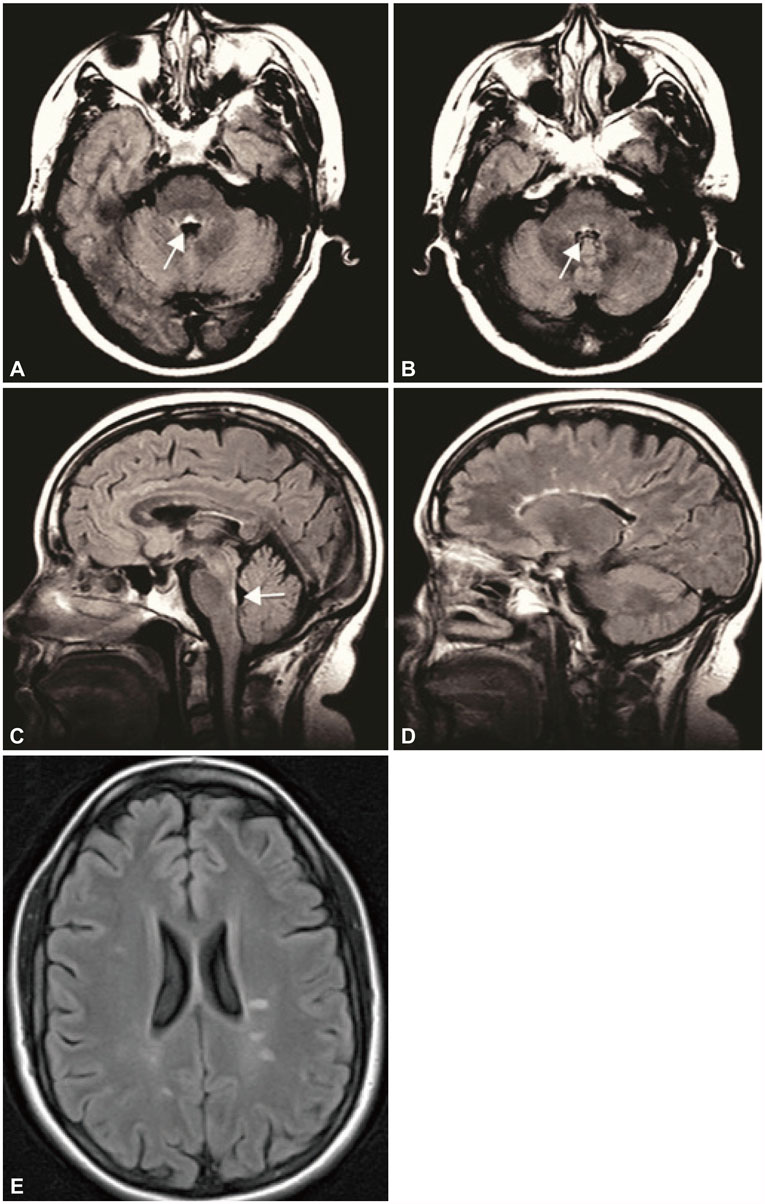J Clin Neurol.
2018 Oct;14(4):574-576. 10.3988/jcn.2018.14.4.574.
Determining the Etiology of Internuclear Ophthalmoplegia in a Patient with a Cardiac Pacemaker and Complex Neurological Presentation
- Affiliations
-
- 1Department of Neurology, Johns Hopkins University School of Medicine, Baltimore, MD, USA.
- 2Department of Neurology, University of California San Francisco, San Francisco, CA, USA. christian.cordano@ucsf.edu
- 3Department of Neurology, Massachusetts General Hospital, Harvard University, Boston, MA, USA.
- KMID: 2424188
- DOI: http://doi.org/10.3988/jcn.2018.14.4.574
Abstract
- No abstract available.
MeSH Terms
Figure
Reference
-
1. Karatas M. Internuclear and supranuclear disorders of eye movements: clinical features and causes. Eur J Neurol. 2009; 16:1265–1277.
Article2. Bolaños I, Lozano D, Cantú C. Internuclear ophthalmoplegia: causes and long-term follow-up in 65 patients. Acta Neurol Scand. 2004; 110:161–165.
Article3. Keane JR. Internuclear ophthalmoplegia: unusual causes in 114 of 410 patients. Arch Neurol. 2005; 62:714–717.4. Cronin EM, Mahon N, Wilkoff BL. MRI in patients with cardiac implantable electronic devices. Expert Rev Med Devices. 2012; 9:139–146.
Article5. Korutz AW, Obajuluwa A, Lester MS, McComb EN, Hijaz TA, Collins JD, et al. Pacemakers in MRI for the neuroradiologist. AJNR Am J Neuroradiol. 2017; 38:2222–2230.
Article6. Padmanabhan D, Jondal ML, Hodge DO, Mehta RA, Acker NG, Dalzell CM, et al. Mortality after magnetic resonance imaging of the brain in patients with cardiovascular implantable devices. Circ Arrhythm Electrophysiol. 2018; 11:e005480.
Article7. Ono M, Suzuki M, Isobe M. Feasibility, safety, and potential demand of emergent brain magnetic resonance imaging of patients with cardiac implantable electronic devices. J Arrhythm. 2017; 33:455–458.
Article8. Thompson AJ, Banwell BL, Barkhof F, Carroll WM, Coetzee T, Comi G, et al. Diagnosis of multiple sclerosis: 2017 revisions of the McDonald criteria. Lancet Neurol. 2018; 17:162–173.
Article
- Full Text Links
- Actions
-
Cited
- CITED
-
- Close
- Share
- Similar articles
-
- A Catastrophic-Onset Longitudinal Myelitis Accompanied by Bilateral Internuclear Ophthalmoplegia in a Patient with Systemic Lupus Erythematosus
- A Case of Bilateral Internuclear Ophthalmoplegia
- Isolated Unilateral Internuclear Ophthalmoplegia After Head Trauma
- Myasthenia Gravis Presenting With Bilateral Pseudo-Internuclear Ophthalmoplegia
- Bilateral Internuclear Ophthalmoplegia Following Spontaneous Subarachnoid Hemorrhage


